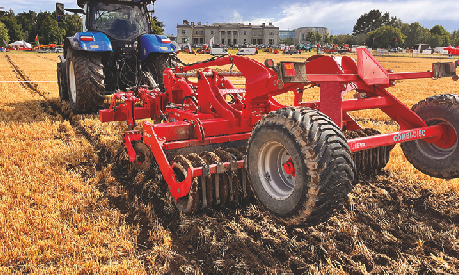25 August 2023
Stubble cultivation and its role in controlling problem grass weeds

Stubble cultivations should be seen as a very useful integrated pest management (IPM) tool to control weeds.
There has been a significant increase in the cases of problem grass weeds like bromes, wild oats and blackgrass being reported to Teagasc advisors again in 2023.
Stubble cultivations are the first step in the control of many grass weeds, as the reliance on herbicides is not achieving adequate control on many farms.
As part of the IPMworks project, we visited Denmark in June where Italian ryegrass has become a bigger problem than blackgrass on many farms. Where the problem is bad, growers are spending up to €150/ac on various herbicides trying to control grass weeds, on top of all the IPM measures available.
Herbicide resistance is widespread, as Italian ryegrass has the ability to develop resistance even faster than blackgrass. We have already received samples into Oak Park of both Italian ryegrass and blackgrass from growers in Ireland, which are resistant to many of the common herbicides.
In Denmark, a full IPM approach including crop rotation, rogueing, stubble cultivations, machinery hygiene, herbicides and possibly grass ley are being considered to eliminate the problem, as using herbicides alone was not the answer.
Shallow cultivations, no deeper that 2cm, will encourage up to 80-90% of sterile brome and blackgrass seeds to germinate. Be careful not to cultivate too deeply as this can induce dormancy in some weed seeds and delay germination until next season.
This article first appeared in the August Teagasc Tillage Advisory newsletter. Click here to access the newsletter, which also provides an update on preparing for oilseed rape and growing catch crops this year.
Also read: Catch crop grazing options limited
Also read: Making adjustments to the Straw Incorporation Measure
